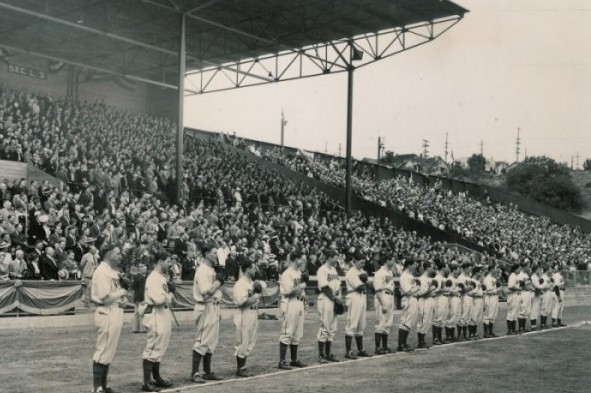
By David Eskenazi and Steve Rudman
Rooting around in baseballs statistical weeds a few months ago, we stumbled across a list of Major League rookies who announced themselves by belting debut grand slams. Only four individuals have accomplished the rare, first-at bat feat (all are innocuous) Bill Duggelby (1898), Jeremy Hermida (2005), Kevin Kouzmanoff (2006) and Daniel Nava (2010) — an analogy we find appropriate in introducing Dan Raleys first baseball book, Pitchers of Beer, just released by the University of Nebraska Press.
In baseballese, Raley not only jacked his story of the Seattle Rainiers out of the park, its a four-run, tape-measure, walk-off shot. Rarely does a book fuse history, humor and storytelling as well as this one.
Disclosure: A former Seattle Post-Intelligencer reporter (print edition) now based in Atlanta, Raley is a long-time colleague and collaborator with both Wayback Machine scribes, one of whom, David Eskenazi, provided the historical images that help make the pages of Pitchers of Beer such a delight, to say nothing of a significant addition to the regions history trove.
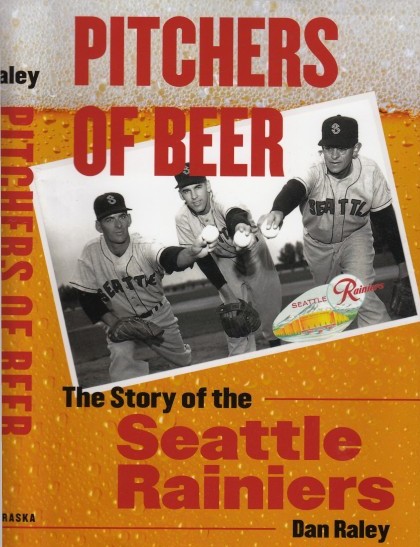 More disclosure: Had Raley delivered a weak pop-up or a loud foul in his 292-page narrative, we probably would have just ignored it. Good for him and better for us that he did not.
More disclosure: Had Raley delivered a weak pop-up or a loud foul in his 292-page narrative, we probably would have just ignored it. Good for him and better for us that he did not.
Pitchers of Beer covers the era of professional baseball in Seattle from 1937 through 1964 (Great Depression through World War II and beyond the Century 21 Worlds Fair), which coincides with the ownership of Emil Sick, in those years the citys leading beer purveyor (Rainier Brewery) and a man imbued with charisma, clout and civic conscience.
Mostly due to the latter, Sick became one of the regions prominent personalities, introducing Northwest fans to some of baseballs greatest players and outlandish characters.
It might surprise some to discover that the minor league Rainiers, in one fashion or other, had passing dalliances with iconic figures such as Babe Ruth, Rogers Hornsby and Ted Williams, that they served as the launching platform for Fred Hutchinson (1938), Sammy White (1949), Maury Willis (1957), Vada Pinson (1958), Ron Santo (batboy), Rico Petrocelli (1964), and others, and that they were the final baseball resting place for Hall of Famer Earl Averill, (1941), Ewell Blackwell (1955, came closest to duplicating Johnny Vander Meers feat of pitching consecutive no-hitters), Seattle native Jeff Heath (1950, a two-time AL All-Star who produced a 58-hit month for Cleveland in 1938) and Johnny OBrien (1960).
Owing to Raleys laborious and productive research, as well as more than 150 interviews, Pitchers of Beer includes all the major moments in Rainiers history as well as wonderful minutiae that explains how and why they became a civic treasure to hundreds of thousands in the Puget Sound region for nearly the entirety of their 27-year run through the Pacific Coast League.
Raley traces the birth of the Rainiers to Sept. 19, 1937, surely one of the more unusual days in Seattle sports history. Their predecessor, the lamentable Seattle Indians, had a season-ending doubleheader scheduled at dilapidated Civic Field against the Sacramento Solons, but two things happened that rendered both contests moot.
First, a dozen federal agents swooped through the Civic Field gates, followed by a phalanx of Washington cops representing the state tax commission, all demanding that the fifth-place and cash-strapped Indians hand over all outstanding admission taxes in what amounted to a blatant money grab. The next morning, the Seattle Post-Intelligencers main headline blared, G-Men Seize Ball Game Cash.
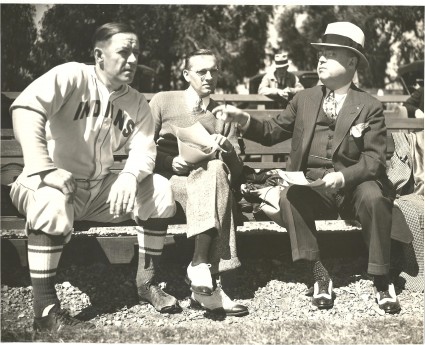
It might have been the first legalized holdup staged in the city, Raley writes in Pitchers of Beer.
Pitcher Dick Barrett served as the centerpiece of the other half of the days shenanigans. Barrett had 18 victories heading into the doubleheader. A 20-win season meant a $250 bonus, and manager Johnny Bassler, a former major league catcher considered the best in the business from 1921-25, had him penciled in to pitch both games.
Indians owner Bill Klepper, his gate receipts snatched by the feds, ordered Bassler not to use Barrett in the second game after he won the first, 4-1. Klepper, with no mind to pay Barrett a $250 bonus, and Bassler argued, Bassler shoved Klepper and sent Barrett to the mound anyway. Barrett won the nightcap 11-2, after which Klepper fired Bassler for insubordination.
Klepper, often called “greedy and gutless”, comes across in Raleys account as a retro version of future clueless owners George Argyros (Mariners) and Ken Behring (Seahawks), and he smelled wolves at his door. He presided over a bad ball club that drew just 144,866 fans for the season, had debts nearing $80,000, had been served with a spate of lawsuits from unpaid contractors, and was about to have his club evicted from Civic Stadium for failure to pay the rent. Two days before Barrett pocketed the $250 bonus, the beleaguered Klepper placed the Indians up for sale.
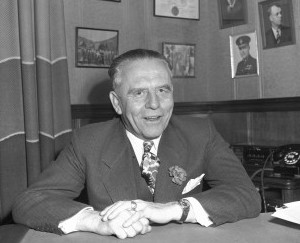
At the Pacific Coast League Winter meetings that November, Kleppers fellow owners ousted him from the fraternity for mismanagement of the Indians (Klepper had also been expelled as an owner of the Portland franchise in the 1920s).
With Klepper booted, and not a wet eye in the house, nobody knew what would happen next. In some professional form, baseball had existed in the Seattle area since 1890, with the Clamdiggers (1902), Chinooks (1903), Siwashes (1904-08), Turks (1909), Giants (1910-17, Northwest League; 1918, 1920, Pacific Northwest International League, 1919, Northwest International League) and other dead-ball curiosities preceding the nearly bankrupt Indians (when Seattle re-joined the Pacific Coast League in 1919-1921 its team was named “Rainiers”, after a very brief stint as “Purple Sox”, and prior to being named “Indians” via a fan-naming contest). But now baseball in Seattle faced a dim future.
With the Indians on their verge of folding, and at the urging of powerful union boss Dave Beck and Roscoe Torchy Torrance, a UW alum who had wired the town to meet his own political agenda, Sick came to the rescue two weeks before Christmas (1937). Owner of one of the citys few recession-proof enterprises, Sick could afford to take on a baseball club. Think of him as part of the same food chain that later produced Paul Allen. Only differences: Sick traded in beer rather than bytes, and Sick really didnt care for sports.
Wrote Raley: Sick provided $200,000 up front, setting aside $25,000 to be used as working capital with the rest going to toward unpaid bills. He came up with another $200,000 for a stadium, handing over $40,000 to George Vanderveer, landowner of the Rainier Avenue site that once housed Dugdale Park, after briefly considering locations at the south end of Lake Union and in north Seattle near busy Aurora Avenue.
Sick inherited a woeful franchise but a potentially fertile market. At the time, none of the Major League teams in operation eight in the American League, eight in the National League operated west of St. Louis. Since UW football had mostly been comatose since the mid-1920s, and the hydroplanes had yet to arrive, the Pacific Coast League, which included the Los Angeles Angels, San Francisco Seals, San Diego Padres, Hollywood Stars, Sacramento Solons, Oakland Oaks, Seattle Rainiers and Portland Beavers, effectively could be marketed as a de facto major league if a good product could be offered.
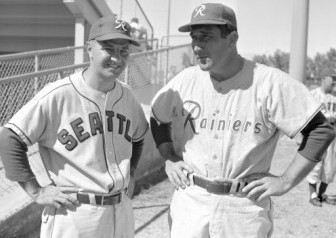
While Sick had to be talked into buying the Indians, he needed no prodding to invest in his purchase. He renamed the Indians the Rainiers, after his beer, which had been named after the mountain, and established plans to house the club in a state-of-the-art facility.
An unabashed capitalist who believed that baseball could help his beer sales, Sick set out to make a major league operation out of a minor league one, and he mostly succeeded. Factors beyond Sicks control, and nearly three decades down the road, eventually sank his investment and killed Seattles greatest summer entertainment. But while they existed, the Rainiers held every sports fan here in their grip.
Wrote Raley: He (Sick) built a new-age ballpark and put talented, fan-pleasing characters in uniform. The new owners energy came at the city like a 100 mph fastball. He had no particular love for baseball, but he had money and was willing to spend it to address (what Sick believed to be) a pressing civic responsibility.
Aside from constructing Sicks Stadium, nothing the owner did as part of the Rainiers rollout had more long-term resonance than the signings of pitcher Fred Hutchinson and outfielder Edo Vanni, both Seattle high school products, in January of 1938 within a 48-hour period.
Hutchinson elected to begin his professional career in Seattle despite offers from the Cleveland Indians and Detroit Tigers, giving Sick a far larger jump start to his franchise than he could have ever hoped possible, and stayed attached to it for the rest of his life (served two stints as manager when he wasnt working in the majors).
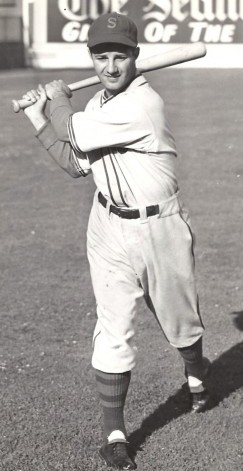
Vanni came aboard after a Rainiers tug-of-war with the University of Washington, which wanted him to play football on scholarship, and he stayed with the franchise through the rest of its existence (and most of his), serving as player, coach, manager and front-office executive.
Vanni holds the distinction of collecting the first hit and stolen base, and scoring the first run in Sicks new park, christened on June 15, 1938. But Hutchinson owned that summer, compiling a 25-7 record with a 2.48 ERA and 145 strikeouts. On Aug. 12, Hutchinsons 19th birthday, 16,354 fans crowded into Sicks Stadium and sat enthralled as he won his 19th game.
Overnight, Hutchinson became a Seattle sensation, writes Raley, with people anxiously staring and pointing at him wherever he wandered away from the ballpark . . . Hutchs scheduled outings, at home and on the road, became must-see events, circled on the calendar by big league scouts and curious fans.
So good was Hutchinson The Sporting News named him the 1938 Minor League Player of the Year that his time as a player with the Rainiers lasted only one season, and all but forced the biggest trade in Seattle sports history up to that time.
Needing the cash (and players) that only someone with Hutchinsons potential could provide, the Rainiers reluctantly sent the teen phenom to the Detroit Tigers on Dec. 13, 1938 in exchange for $50,000 in cash and $50,000 for the contracts of four players, including two major league starters, Jo Jo White and infielder Tony Piet.
Sick had made a spectacular deal. In 1938, his first year of ownership, the Rainiers led the PCL in attendance, drawing 309,723, more than doubling the 1937 total of the inept Indians. And for agreeing to give up Hutchinson, Sick acquired foundation players, especially White and first baseman George Archie, who would form the crux of three consecutive pennant-winning teams (1939, 1940, 1941), and help him hang on to the fan base that Hutchinson had been so instrumental in developing.
Archie hit .330 (1939) and .324 (1940), winning the PCL’s MVP award in the latter season (217 hits). White (1939-42, as a Rainiers player) had a go-for-broke style of play that mesmerized fans, and a homespun personality (Raley description) they adored.
People gravitated to this man, writes Raley, with young fans vowing to grow up and play left field just like White. Recognizing his drawing power, management made sure Whites stay in Seattle was more lucrative than the big leagues had been, paying him $10,000 per season, as opposed to the $8,000 he had earned in his final year in Detroit.
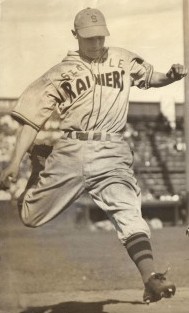
Jack Lelivelt managed the first two (1939-40) of those three pennant winners, and Bill Skiff skippered the final one (1941) following Lelivelts untimely death, largely because Babe Ruth, one of 13 candidates to replace Lelivelt, did not.
Raley relates that Ruth became a possible successor to Lelivelt within hours of the managers death, his appeal obvious: he would produce a box-office bonanza on the strength of his fame and personality alone.
But Ruth had a down side, according to Raley: The Bambinos previous efforts to manage had been roundly discouraged at the big-league level. Traditional baseball men were fearful of hiring the former Yankees slugger because of his earlier disdain for authority and his rampant desire to live up to his reputation as one of the games more free-spirited and unbridled personalities.
At first, Ruth wanted no part of the Rainiers. Later, he actively campaigned for the job along with some of baseballs biggest headliners, including Rogers Hornsby, Paul Waner, Grover Cleveland Alexander and Gabby Hartnett, Hall of Famers all.
Royal Brougham, the influential sports columnist at the Seattle Post-Intelligencer, campaigned for Ruth in print, saying, Babe Ruth positively would make the team the greatest drawing box office team outside of a few Major League cities. Having endorsed Ruth, Brougham then pulled a 180 in the same column, noting that two of the greatest players in history, Ty Cobb and Walter Johnson, had been busts as managers.
It takes more than a players reputation to handle a ballclub, to instill in it a winning spirit and keep it hustling and playing in harmony. President Sick and his advisors are too shrewd to be enamored by a name, Brougham opined.
So Ruth did not manage the Rainiers, despite making a highly publicized lobbying appearance in Seattle that had the town agog and media slavering. Briefly one of Ruths Yankee teammates, Skiff got the job instead and oversaw pennant campaigns in 1940 and 1941 with Rainiers teams that featured some of the more popular players in the franchises history: Bill Lawrence (1938-43, ’49), Hal Turpin (1932, 1937-45) and Dick The Needle Gyselman (1933-44, ’47) among them.
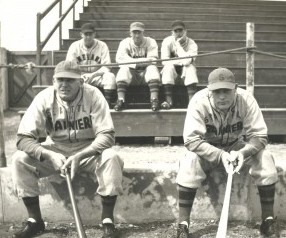
World War II crushed Skiffs career in Seattle, and abetted in the deterioration of the Rainiers. Players who might have helped the club went off the war; replacements were hard to come by. The government banned night games for 18 months and restricted travel of all teams. As a result, and due to the general focus on the war effort, the Rainiers devolved into an afterthought, attendance plunging to Seattle Indians levels.
The Seattle ball club made an exhaustive 59 player transactions in 1945, and some of them smacked at desperation, writes Raley
En route to 109 losses in 1946, the Rainiers fired Skiff at mid-season (great detail from Raley: Sick asked for Skiffs resignation and fired him after the manager refused), replacing him with the popular Jo Jo White, who fared no better. After three 90-loss seasons, Sick replaced White with interim manager Bill Lawrence, then hired Paul Richards, who managed a 104-loss team in 1950, setting up Seattles one-year engagement with Hall of Famer Rogers Hornsby.
Having arrived in Seattle way back in 1935, Barrett, the balding and chubby right-hander nicknamed Kewpie, witnessed the entire span — rise and fall — of Sicks Rainiers.
People idolized Barrett, writes Raley, not only because he was frumpy but because he seemed to want to pitch forever. He never looked to the bullpen for help, and he could throw every third day. He was always offering to work both ends of a Sunday doubleheader.
One of the most popular Rainiers, Barrett won 20 or more games seven times, including a high of 27 in 1942. He threw a perfect game at 41 years of age on May 16, 1948 at Sicks Stadium and, two months later, on Aug. 20, was showered with gifts on Dick Barrett Night (received a Chevrolet sedan from the fans).
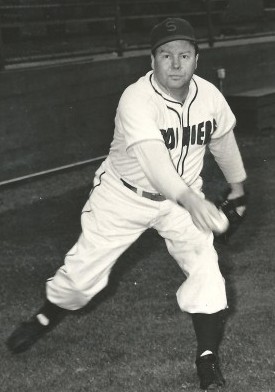
If Barrett had legions of fans, Hornsby impressed few, despite his status as a seven-time batting champion and two-time Triple Crown winner, and in spite of managing the club to the 1951 PCL championship, a title in part made possible by Jungle Jim Riveras .352 batting average, 20 home runs and 112 RBIs.
Writes Raley: He nearly smothered everyone with his brutish style. Everything was all about Hornsby. No player was exempt from having his confidence shattered. No one was excused from being publicly humiliated by this man.
K Chorlton, a Rainiers outfielder/shortstop from 1949-53, felt that wrath. After dropping a fly ball one day, Chorlton and Hornsby engaged in a shouting match, Chorlton repeatedly cursing the famous manager. Hornsby not only cut Chorlton, he made sure Chorlton was properly blackballed by other clubs and consigned to the lower minor leagues.
To the astonishment of many, Hornsby also had the gall to publicly dress down one of the more fascinating figures in Rainiers history, broadcaster Leo Lassen, an icon on the magnitude of Dave Niehaus.
Nobody really knew Lassen on a personal level: Notoriously shy, single and almost a complete introvert, he lived with his aging mother in Wallingford. He had no other family and few, if any, friends.
Lassen had a nasal, staccato, monotone delivery, but it worked. Lassen knew three things: baseball, how to talk about it, and bourbon, a bottle of which (according to Raley) he usually kept uncapped in his broadcast booth.
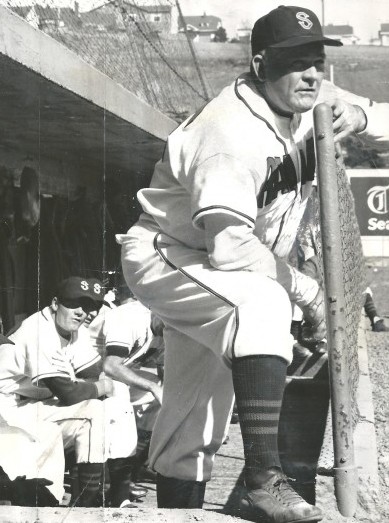
Although Sick had saved baseball in Seattle through his purchase of the Indians, it was through Lassen that thousands of Puget Sounders bonded to them. Lassen, not Sick, or any number of managers and general managers, turned the Rainiers into the athletic equivalent of movie stars, and made every game they played an event not to be missed.
For most of his run (1931-1960), Lassen had almost no competition for audience until television came along, and that development greased his demise, especially when newcomer Keith Jackson arrived at KOMO. In 1961, after Lassen was offered a ridiculously low salary designed to make him resign, he did, spending the remainder of his life a recluse, never again attending a baseball game, which had been the focus of his life and source of his self-esteem.
As Raley points out, at least Lassen did not have to witness the end of the Pacific Coast League as he knew it.
For us, its a tossup as to whether Raley succeeds more in telling the big-picture stories, or whether the plentiful garnishments at his baseball banquet are more appealing. Pitchers of Beer contains lots of little pillow mints:
- Playing a limited role in his final season as a player, Vanni was ordered by manager Richards off the bench to play left field after five opposing home runs departed Sicks Stadium. Vanni couldnt resist wisecracking. Which side of the fence?
- After hitting a home run in Los Angeles, Bill Schuster, aka, “The Rooster” (1940-41, ’50), crossed home plate and kissed a blonde-haired woman in the stands. Another time, after an easy-out grounder to the first baseman, The Rooster, aka “Broadway Bill”, veered off course, ran to the pitcher’s mound, and slid in.
- Rogers Hornsby gambled on the ponies, often stopping to place wagers at Longacres Racetrack in Renton before reaching the ballpark.
- Beneath the first-base grandstand, Sicks Stadium had a secret one-room apartment, sparingly furnished, but clean. While the club put it to legitimate use, some ballplayers used it clandestinely as a love nest. It seems that the man in charge of the teams medicinal needs ran a casual escort service on the side for players private needs, writes Raley.
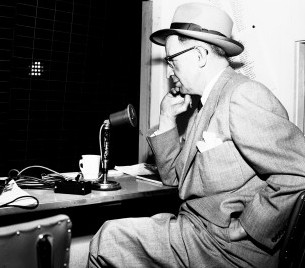
Leo Lassen served as broadcaster for the Indians and Rainiers from 1931 through 1960. / David Eskenazi Collection - Pitcher Ryne Duren think a wild Randy Johnson — once caught a large rat at Sicks Stadium, and forced ballboy Jimmy Johnson to dangle the animal by its tail over the plate so he could drill it with his fastball, which he did.
- In 1954, in an attempt to boost the clubs lagging attendance, the Rainiers asked local softball legend Bob Fesler to face PCL hitters in a pre-game challenge: five Rainiers and five Hollywood players took swings at Feslers throws, and Fesler struck out every batter he faced, a performance that led the Rainiers, a year later, to sign him to a contract.
- The Rainiers employed former UW basketball great Bruno Boin to chase down fence-clearing home runs and return them to the ball club.
- Joe Taylor (1956-57, 60) had Hall of Fame potential but couldnt stay off the sauce, occasionally showing up at the park falling-down drunk. Some of his former Rainiers teammates joked to Raley that Taylor always saw “two balls coming at him whenever he batted, and the challenge was picking out the right one to swing at.”
While the 1962 Worlds Fair turned Seattle from outpost to international city, it did no favors for the Rainiers. The Fair made Seattle major league-ready, and its citizens no longer had much use for any enterprise deemed minor league.
The unraveling of the Rainiers actually pre-dated the Fair, coinciding with Sicks failing health (by 1957 he suffered from emphysema), the encroachment of television, which helped water down his product, the revitalization of the University of Washington football program under new head coach Jim Owens, and Major League Baseballs decision to expand to the West Coast, a move Sick fought bitterly and obviously lost.
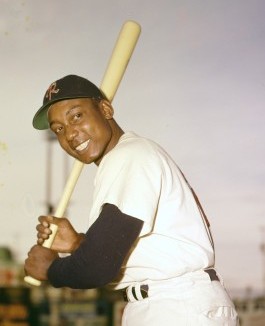
Ill and exasperated and with no way to make the Rainiers profitable anymore, Sick sold them in 1960 to the Boston Red Sox, who eventually sold them to the California Angels.
Actually, as Raley writes, Sick didnt so much sell the Rainiers, as he gave them to the Red Sox for $1, the price to make the transaction legal.
Sick died on Nov. 10, 1964, less than two months after the Rainiers played their final doubleheader. Forty-eight hours after Sick died, Hutchinson passed away from cancer.
Within two days, the Rainiers lost the man who invented them and their first superstar. Lassen, the odd little guy who turned the Rainiers into heroes, made it to 1975, then he died.
Less than a year later, the Kingdome opened, Seattle finally becoming a major league city. That effectively dispatched Emil Sick and his Rainiers into the history books.
They would have remained there if Dan Raley hadnt resurrected them for a final dugout curtain call. But this time, its Raley and Pitchers of Beer that warrant the applause.
(Dan Raley is currently an editor with the Atlanta Journal-Constitution, and has won more than 50 national and regional writing awards. He is also the author of “Tideflats to Tommorow: The History of Seattle’s SoDo”).
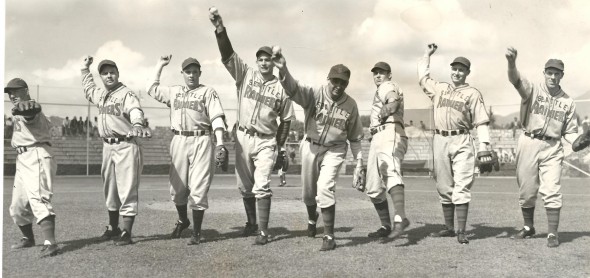
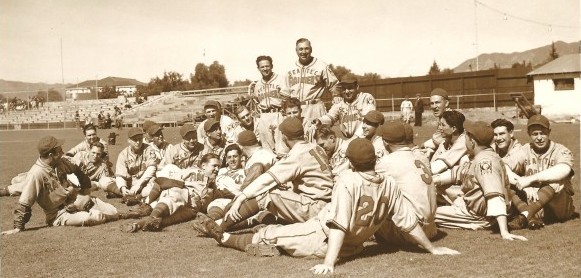
————————————————-
Many of the historic on Sportspress Northwest are provided by resident Northwest sports ?aficionado David Eskenazi, who writes The Wayback Machine every Tuesday. Check out DavidsWayback Machine Archive. David can be reached at (206) 441-1900, or at the following e-mail address: seattlesportshistory@gmail.com
(Wayback Machine is published every Tuesday as part of Sportspress Northwests package of home-page features collectively titled, The Rotation.)

11 Comments
Wayback machine is a great feature. Where did the Rainiers have Spring training, Yakima?
Mostly in California, usually in the San Fernando Valley. One year they had spring training in Laredo, TX. In 1943, they trained in Lewiston, ID., according to David Eskenazi.
Where can I purchase the Pitchers of beer book
In the article we linked directly to the purchase page on amazon.com. You should also be able to get it at any Barnes & Noble if you don’t want to buy on-line. If you don’t want to do that, you can purchase it through the University of Nebraska press. We also linked to their web site in the first paragraph of the review. Thanks for visiting our web site.
I had no idea Hornsby was so hard on the players! I wonder why he was in Seattle only one season. It’s a pleasure to read the story behind the story.
Shameless plug, part two: if you read the book, you’ll see in exacting detail why Hornsby only managed in Seattle for one year.
Yeah, but what a year! We need one of those in Seattle now!
thanks for the story on lassen
My interest in the Seattle Rainiers started with my early interest in local beer brewing history. How lucky we are to have had such a colorful baseball team to go with our great beer.
I’m a little surprised that Jaso led off if only because you just don’t see that happen with catchers…leadoff is usually reserved for speed guys (and Jaso isn’t exactly Rickey Henderson or even John Stearns), but the main thing is getting on base and I saw last weekend that Jaso’s OBP was .375, easily the best on the team. On paper, it makes total sense.
Our speed guys are the fastest in the league in making a right turn at first base and getting back to the dugout. ;-)